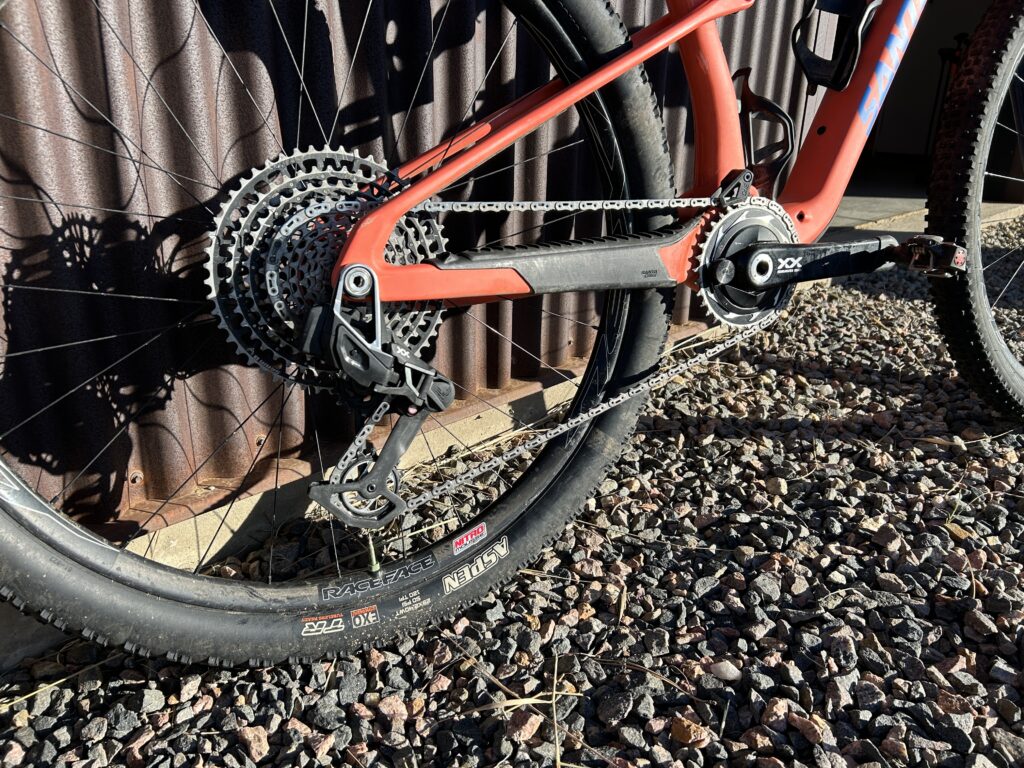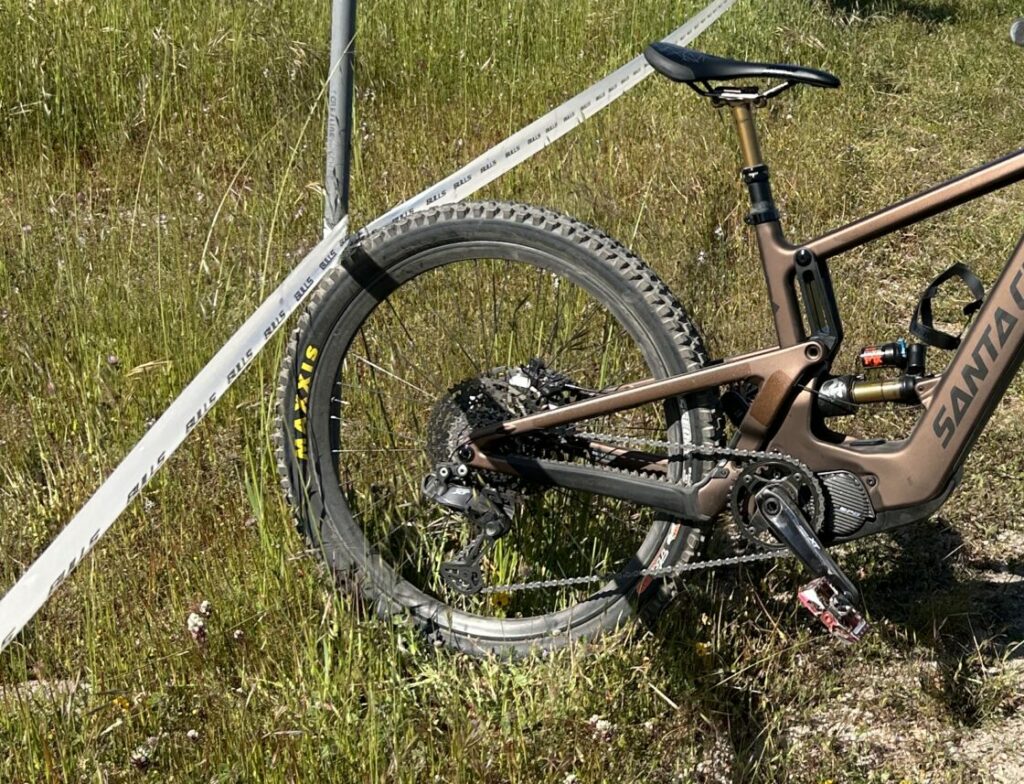On a steep little rise, with a faint wizzing noise, the chain on my Specialized Turbo Levo gave up the ghost. It wasn’t a catastrophic explosion. I didn’t smash my knee on the handlebars or catapult off into the brush.
My morning ride ended with a whimper; if T.S. Elliot rode bikes, he would have approved.
I had a lot of time to think about chains and e-MTBs during the five-odd miles that I coasted, scooted, and walked home. The chain, this humble, boring component, has been criminally neglected in the course of e-bike development. Something has to change.
E-Bike-Specific Components
The bike industry has eagerly rolled out a number of e-bike specific components. Some make more sense than others.
A number of tire manufacturers are offering e-MTB tires. Some are designed for rugged durability, with reinforced casing or tougher rubber. Others are meant to boost battery life with efficient rubber compounds. Having seen accelerated tire wear on my test e-MTBs, this seems like a smart upgrade, but you could probably achieve similar results with reinforced enduro or downhill tires. In fact, a lot of the e-bike tire technology and constructions are borrowed from gravity racing.
Suspension components have also developed to suit heavier bikes that are ridden more aggressively — i.e., e-MTBs. These are usually just beefed-up versions of existing enduro forks or shocks. That’s helpful, although perhaps not essential, unless you weigh 200+ pounds. After all, a 150-pounder like me on a e-bike is equivalent to a 170-pound rider on a conventional bike.
But what about chains?

As of writing this, Shimano offers e-bike chains in 10- and 11-speed options, but no 12-speed to suit its preferred MTB drivetrains. SRAM does not have a 12-speed e-bike specific MTB chain either. The only option I could find was KMC’s E-12 Turbo and E-12 Turbo EPT. According to KMC, these chains can “withstand the weight force of a car” and exceed international standards by 30%. That all sounds good, but honestly it’s too abstract for me to know how it stacks up with the stock SRAM GX chain that I broke yesterday.
Why E-Bike Chains Break
Brent Foes was remarkably prescient when, back in April at Sea Otter, he told me that drivetrains were the weak link on e-MTBs. He anticipated that someday we’d have everything integrated into the motor housing, including the shifting mechanism.
Not long after that, Pinion introduced a drive unit that did exactly that, with an internal gear box. But, far more importantly, later in the momentous year that was 2023, I broke a chain.
Here’s the problem. Existing mountain bike drivetrains are engineered to pair durability and light weight. They’re designed to shift rapidly. I can only speculate, but I would guess their testing protocols do not account for the sustained 1,000-watt load that a full-power e-MTB can produce.
My morning ride ended with a whimper; if T.S. Elliot rode bikes, he would have approved.
If the chain is in the middle of the cassette, offering a nice, straight chain line to the front chainring, I’d wager most all of the existing chains are up to the task on an e-bike.
Things get touchy when the chain is at extreme angles — the largest cog, especially — or when the chain is shifted under load. I’m not the most experienced e-MTB rider, but I know I’ve made a lot (a LOT) of shifts under load. You can hear the clunk. Eventually, this torsional force is bound to wear a chain and potentially lead to failure.
In my case, the chain failed at the pin. The two outer plates pulled apart, and it gave up. I also noticed that the inner plates had twisted slightly outboard. There’s no way to say if these failures happened simultaneously, or if one provoked the other. Interestingly, the failure didn’t occur while shifting. I was pedaling in gear, offering about 270 watts of my own power. “Just riding along,” as they say.
The only wholesale change that might significantly reduce the likelihood of chain failures would be an entirely new drivetrain.
Conclusion
I can’t think of what I would have done to prevent the broken chain. I’ve put 215 miles on this test bike with tons of vertical. According to KMC, its e-bike chain has a lifespan of 4,660 miles, but who can tell how that is estimated.
My biggest regret was not realizing there was a chain tool in the SWAT assembly in my bike’s head tube. That would have saved me a mile or two of walking.
The only wholesale change that might significantly reduce the likelihood of chain failures would be an entirely new drivetrain.
I already mentioned the Pinion option, but that isn’t readily available yet, especially to Americans. Some of the new electronic shifting systems could make a difference.

SRAM’s AXS T-type Transmission has specific cassette geometry that harmonizes with the shifting action to reduce clunky gear changes. It also eliminates the derailleur hanger. I have this system on my cross-country bike, and it’s easy to imagine how this would improve e-MTB performance.

Also, I tested Shimano’s new Di2 shifting on an e-bike at Sea Otter, and it offers an automatic shifting setting. This system works remarkably well, as it syncs gear changes with your cadence, power, the drive unit’s power, speed, and probably whether or not Mars in in retrograde.
Inevitably, most high-end e-MTBs will have some form of electronic shifting, and hopefully it will be optimized to reduce chain wear and destruction. We’re not there yet.
For now, I think I’ll order one of those KMC chains. I’ll make sure my drivetrain is adjusted as near to perfection as possible, and part of that is checking derailleur hanger alignment. Also, I’ll do a better job of cleaning and lubing my e-MTB chain. It’s the little things.
